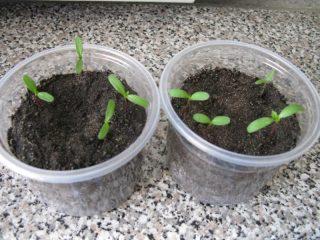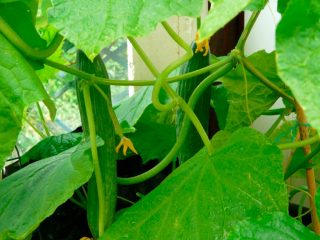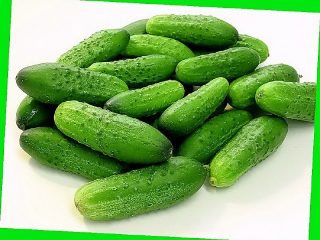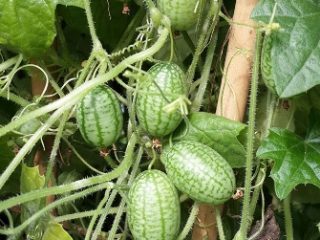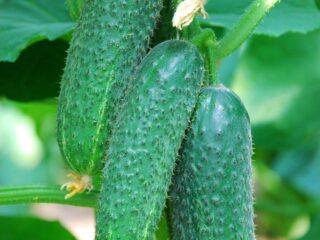Content
Cucumber Spino is a highly productive vegetable variety that is unpretentious to growing conditions. Judging by the numerous reviews from gardeners and the manufacturer’s description, it has excellent characteristics, for which it is greatly loved by gardeners. Cucumber is universal in use, suitable for fresh consumption and preparing preparations for the winter.
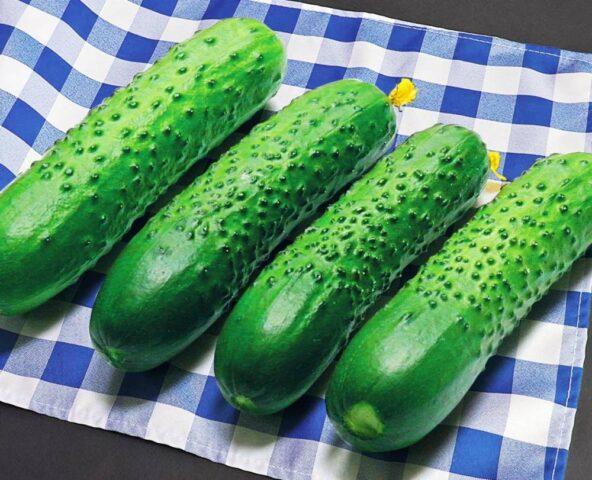
Spino is a hybrid, labeled F1
Origin story
Cucumber Spino is a promising new product from the Dutch company Syngenta, included in the State Register of Russia in 2015. The variety is suitable for cultivation in the first and second turns of closed soil, shows the best results in greenhouses and film greenhouses, and is suitable for early sowing.
Description of Spino cucumbers
The plant belongs to indeterminate varieties and has generative development. A variety of open type, medium branching and height. The main stem of Spino with short internodes forms many ovaries (up to seven pieces). There are few side shoots.Cucumber leaves are medium-sized, slightly wrinkled, light green in color. The stalk is long. Judging by the description, two female flowers are formed on 3-5 ovaries in the leaf nodes of Spino. The cucumber itself is short, coarsely tuberculate, smooth, and cylindrical in shape. The color of the fruit is solid, dark green, there are large spines on the surface, the pubescence is light. Almost all cucumbers are the same size, 10-12 cm long, weighing up to 100 g. The taste of Spino is pleasant, slightly sweet, the flesh is crisp, juicy, dense, without bitterness.
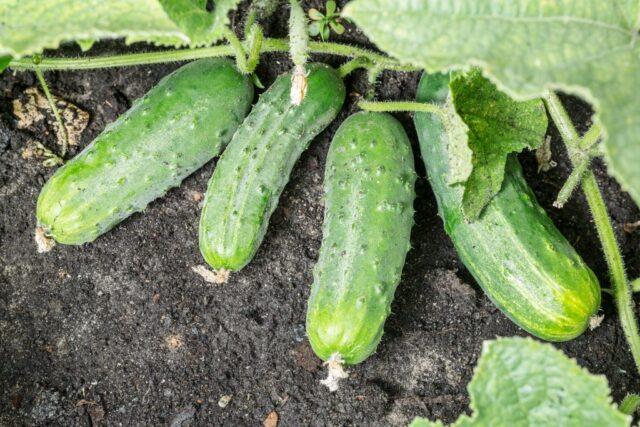
Spino cucumber is suitable for salads and does not lose its taste when canned.
Characteristics of Spino cucumbers
The variety is shade-tolerant, parthenocarpic, suitable for growing in protected soil in any climatic region. The bushes are not afraid of stressful situations, which is why they are often planted late or very early. Due to its high resistance to lack of light, the hybrid is suitable for cultivation in areas with short daylight hours. The Spino cucumber ripens very quickly, has a good presentation, and is suitable for transportation over long distances. According to the originator of the variety, the variety is resistant to light frosts and has high immunity to diseases. Spino is unpretentious in cultivation, does not require complex fertilizing, and even on problematic soil produces a stable harvest.
Productivity of Spino cucumbers
This early ripening variety produces its first fruits already on the 40th day from the moment of germination. The period from the beginning of flowering to their full ripening is 2-3 weeks in the spring turnover, 10-15 days in the summer turnover.
The fruiting of the variety is stable.In film greenhouses, subject to all rules of agricultural technology, up to 20 kg of crop is harvested per square meter. It is advisable to collect greens every day, despite the fact that the fruits first grow in length and then in width, due to which they are not prone to overgrowth.
Resistance to diseases and pests
During care, the Spino cucumber needs preventive measures. Plants, especially those grown in greenhouse conditions, must be sprayed with saline solution from time to time, and the walls of the greenhouse must be disinfected with formaldehyde. Cucumber is not affected by powdery mildew, yellowing virus, mosaic, or cladosporiosis. But when grown in high temperature conditions, it can be infected with Fusarium wilt. If the humidity levels are excessive, Spino is affected by ascochyta blight, and with excessive watering or hypothermia, white rot may occur.
Spraying with copper-containing preparations will help prevent the appearance of pests.
Advantages and disadvantages
While working on the variety, Spino producers tried to improve the variety and eliminate the shortcomings of other hybrids. Therefore, cucumber has many positive qualities.
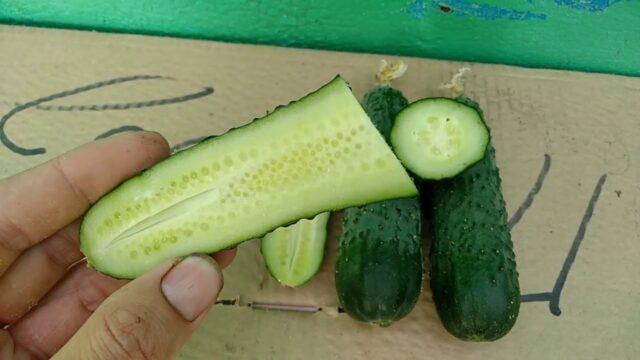
Thanks to the abundance of advantages, the Spino cucumber is considered one of the best varieties of the crop.
Advantages:
- amicable maturation;
- early ripeness;
- easy cultivation;
- high productivity;
- stress resistance;
- ripening in the shade;
- resistance to diseases.
Flaws:
- high cost of planting material;
- formation of a large number of ovaries;
- impossibility of collecting seeds.
Features of cultivation
Despite the fact that the Dutch cucumber variety Spino is recommended for greenhouses, some gardeners successfully grow it in open ground and even in fields without seedlings. The timing of planting seeds depends on the chosen growing method:
- In closed ground conditions, in order to get a harvest by the beginning of spring, sowing is carried out in the middle or end of January. Each bush is tied to a support. During their growth, the six lower leaves are blinded. This allows Spino cucumbers to grow strong roots. To increase productivity, additional shoots are released up to the third leaf.
- In open areas, Spino cucumber is cultivated in the central and southern regions. They begin to sow seeds when the soil warms up to a temperature of +16-18 °C. This usually happens in May.
Cucumber feels best on loose, medium loamy or sandy soil. The area for the beds must be prepared in the fall. To do this, it is carefully cleaned, the top layer of soil is removed, dug up, and treated with fungicides. A week before planting, the beds are loosened and fertilized with humus or manure.
Sowing in open ground
The optimal period for sowing Spino in open ground is considered to be the end of May. The time when the earth is completely warmed up and the threat of return frosts has passed. Before sowing, the prepared beds are watered, holes are made at intervals of 20 cm, row spacing is 35 cm wide. Five seeds are placed in each, deepening them by 1-2 cm. After this, the beds are moistened again and covered with transparent material until shoots emerge.
The Spino cucumber does not tolerate dense planting.As they grow, excess and lagging bushes are removed.
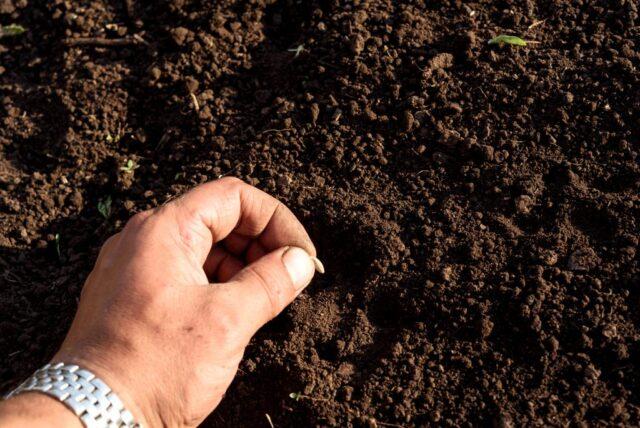
The seeds of the variety do not need to be treated before sowing
Seedling method
The seedling method of growing Spino does not require special skills and can be done even by gardeners without experience. During the procedure, separate containers are used, since cucumber does not tolerate picking well. Light nutritious soil is poured into peat pots; it is better if the soil is purchased at a specialized store.
After a couple of days, the soil is moistened, holes 2 cm deep are made in each pot, peat or manure is poured into them, Spino seeds are placed and sprinkled with soil. A film is stretched over each container, which is removed after the sprouts appear.
Three weeks after the emergence of seedlings, the seedlings are sent to a greenhouse, where they are planted in pre-prepared beds, 2-3 bushes per square meter.
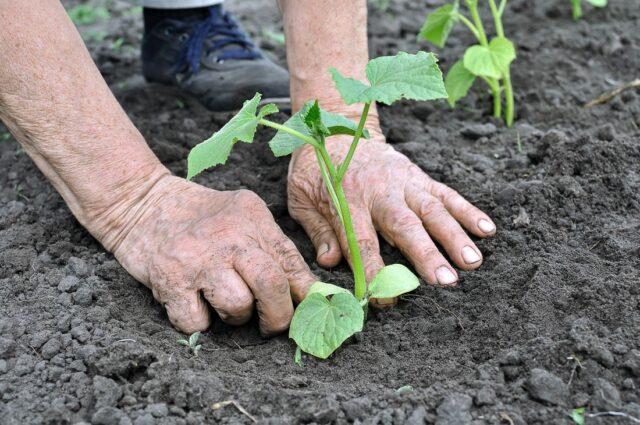
By the time the Spino cucumber is transplanted into the greenhouse, there should be at least three true leaves on the trunk
Rules of care
The Spino F1 cucumber is not capricious. Caring for the crop consists of following standard rules:
- Watering. The species loves water, but excessive moisture can be detrimental to it. Water the plant every other day, preferably by drip method. The water should be settled and warm.
- Garter. The Spino variety requires the formation of bushes. When the sprouts grow to 20 cm, they are tied to a trellis.
- Fertilizer. This variety of cucumber loves nitrogen-phosphorus fertilizers and organic matter. Fertilize the crop every two weeks.During active growth, Spino responds well to ash and potassium nitrate.
- Hilling. A procedure that helps strengthen the roots of a culture. Spino is sprinkled with soil for the first time when the sprouts grow to 10 cm in length, then they are spudded weekly.
Already in early May, the Spino cucumber planted under film begins to ripen. It should be removed quickly, inspecting the beds daily. Despite the fact that the hybrid is not prone to overgrowing, it is not advisable to overload the bushes.
Conclusion
Due to its excellent characteristics, the Spino cucumber is very popular among Russian vegetable growers. Even an inexperienced gardener can grow it, since the process is simple and does not require special knowledge. Cucumber is successfully used for preparing preparations; it looks beautiful in jars and does not lose its taste when pickled.
Reviews from gardeners about Spino cucumbers



